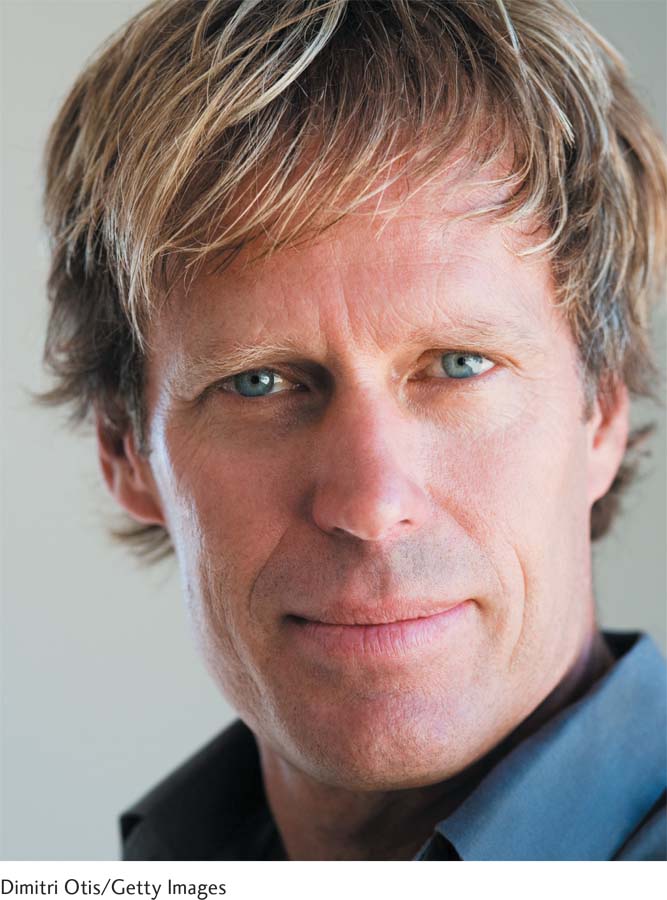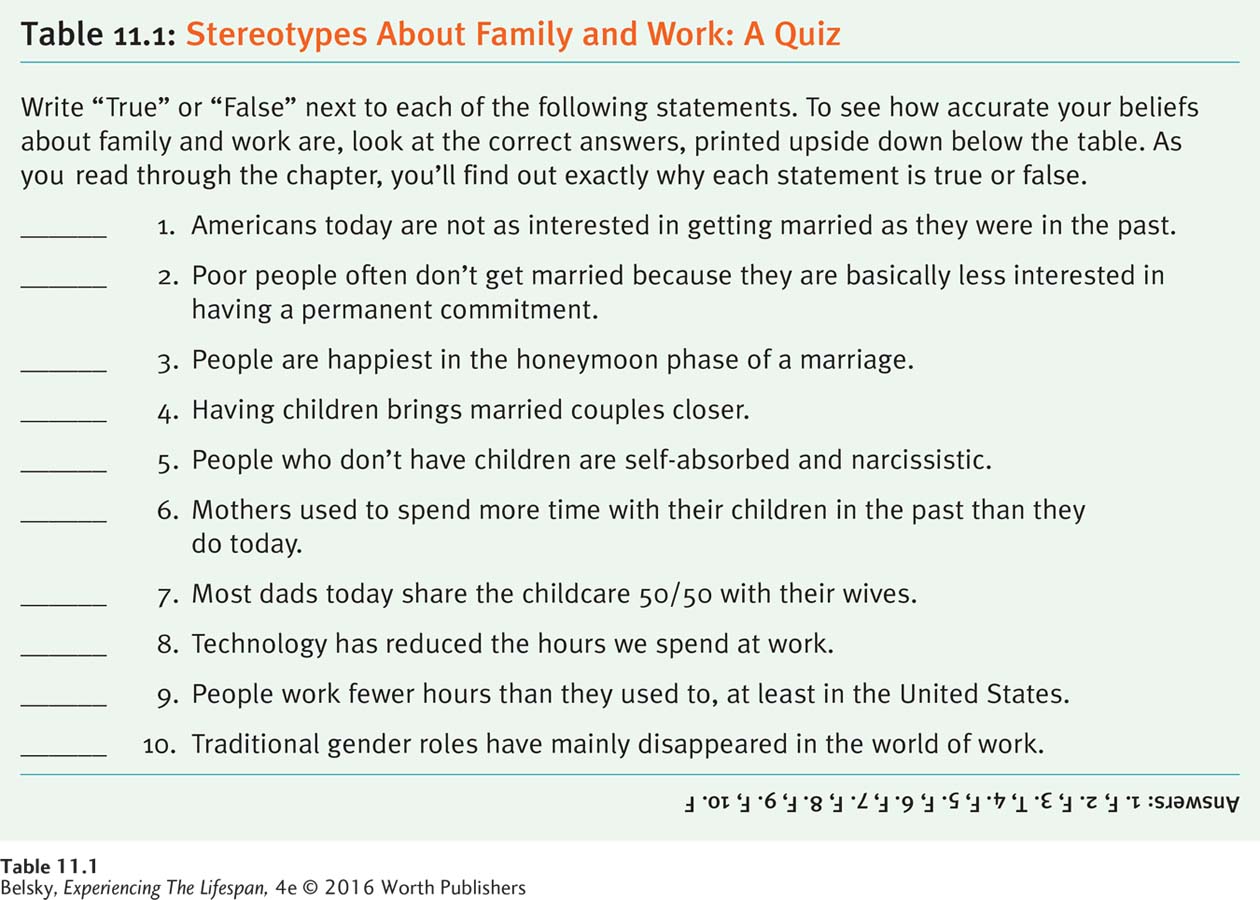Chapter Introduction

Relationships and Roles
CHAPTER 11
CHAPTER OUTLINE
Setting the Context: The Changing Landscape of Marriage
The Main Marital Pathway: Downhill and Then Up
The Triangular Theory Perspective on Happiness
Commitment, Sanctification, and Compassion: The Core Attitudes in Relationship Success
Couple Communications and Happiness
INTERVENTIONS: Staying Together Happily for Life
Divorce
HOT IN DEVELOPMENTAL SCIENCE: Marriage the Second or Third or “X” Time Around
Setting the Context: More Parenting Possibilities, Fewer Children
The Transition to Parenthood
Exploring Motherhood
Exploring Fatherhood
Setting the Context: The Changing Landscape of Work
Exploring Career Happiness (and Success)
HOT IN DEVELOPMENTAL SCIENCE: A Final Status Report on Men, Women, and Work
Home at 3 a.m. from closing the restaurant and hopefully to bed by 4. Then, Jamila wakes up and gets the kids ready for school to arrive at her job at 9.
Matt’s first marriage to Clara ended in a disastrous divorce. He feels blessed to have this second chance for happiness at age 35. Matt and Jamila met at a community-
After a difficult year struggling to connect with the twins, Matt finally knows that his stepchildren see him as their real dad—
That’s why Matt just “supplemented” his store manager position with a weekend shift running the local health food store. Yes, the 70-
Do you know someone like Matt who is trying to be a caring husband, a sensitive father, and support his family? Perhaps like Jamila, you have a friend who feels overwhelmed by a high-
This chapter is devoted to the main role challenges involved in being adult. Here, I’ll build on the Chapter 10 discussion of love and career by focusing directly on marriage, parenthood, and work. Before beginning your reading, you might want to take the family and work quiz in Table 11.1 on the next page. Soon you will learn why each stereotype is right or wrong.
Although I will discuss them separately, I must emphasize that we cannot look at marriage, parenthood, and career as separate. Our work situation determines if we decide to get married (recall the last chapter). Having children changes a marriage and, as with Matt, affects our feelings about our career. As developmental systems theory suggests, marriage, parenthood, and career are tri-
